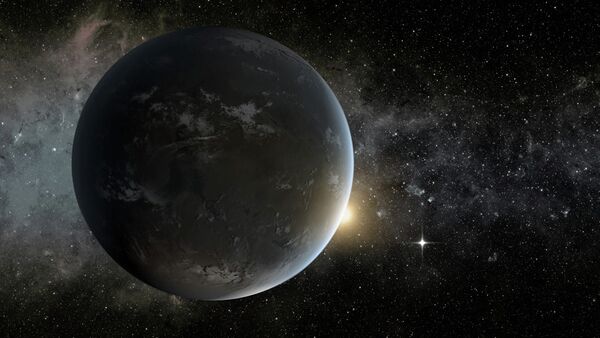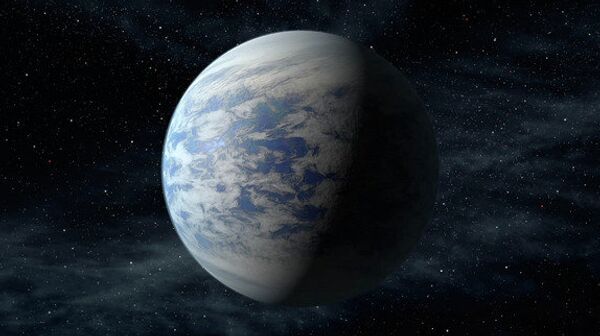WASHINGTON, April 18 (by Karin Zeitvogel for RIA Novosti) – NASA’s Kepler planet-hunting space telescope has discovered seven new planets, including two that are orbiting in the zone “between fire and ice” that could sustain life, researchers working on the project said Thursday.
“We have found two planets in the habitable zone of another star and they are the best candidates we have found to date for habitable planets,” said William Borucki, the principle investigator for the Kepler mission at NASA’s Ames Research Center in California.
A planet that is in the habitable zone is “between the fire and ice where a planet could have liquid water on its surface,” which is essential to sustaining life, he said.
If a planet is too close to its star, it will be “too hot and the oceans would boil,” and it if is too far from its star, the oceans would freeze, he explained.
“Neither condition is conducive to the evolution of life,” said Borucki.
The two potentially habitable planets, which are called Kepler-62e and 62-f, are around 1.5 times the size of Earth. Planets that are close in size to Earth are more likely to be rocky, making the discovery of the two planets orbiting the star Kepler-62 a very exciting piece of news, the scientists said.

“We only know of one star that hosts a planet with life, and that’s the sun,” said Thomas Barclay of the Bay Area Environmental Research Institute in California.
“Finding a planet in the habitable zone around a star like our sun is a significant milestone toward finding truly Earthlike planets,” he said.
The Kepler-62 star is about two-thirds the size of Earth’s sun, one-fifth as bright, and “a bit cooler,” said Lisa Kaltenegger, an astronomer at the Max Planck Institute for Astronomy and the Harvard-Smithsonian Center for Astrophysics.
The planetary system around Kepler-62 is around 1,200 light years from Earth in the Lyra constellation.
Two large planets were discovered by Kepler in a separate planetary system, orbiting a star that is almost the same size as the sun and 80 times as luminous. That star, called Kepler-69, is some 2,700 light years from Earth in the Cygnus constellation.
Kepler determines a candidate planet’s mass and orbit by watching it transit in front of its star, which causes a percentage of the light from the star to be blocked.
The resulting dip in the brightness of light from the star is used to determine the planet’s size relative to that of its star.
The discovery of the potentially habitable planets “takes us on the path towards understanding how many planets there are around other stars and whether they are small enough to be rocky, whether any of them might be habitable and have liquid water on them. Today’s exciting announcement takes us even closer to that goal of finding habitable planets around other stars,” said Paul Hertz, director of astrophysics at NASA’s headquarters in Washington.
Kepler, launched into space in 2009, has detected 2,740 candidate planets thus far, the researchers said.
Many of the planets found early in the mission were large, gas planets that orbited their stars very closely. These planets, called “hot Jupiters,” are easier to detect because of their size and short orbital periods, but are outside of the habitable zone.
The declaration that two of the new planets are potentially habitable is based on modeling and hypothesis, because no one has measured the diameter or checked the atmosphere of any of Kepler’s new discoveries.
“But if you have a rock, and it behaves a lot like the rock we live on, we can learn a lot from it,” said Kaltenegger.





